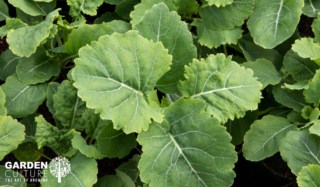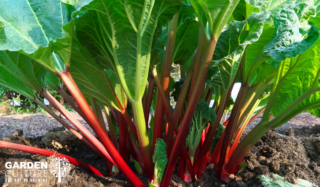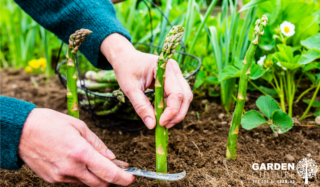Trends come and go, but many gardeners and growing experts agree that the perennial vegetable garden is here to stay!
Chris Collins, head of organic gardening at the United Kingdom charity Garden Organic, predicts that perennial vegetables will be popular in 2023. We think they’re going to become a staple in people’s gardens!
Why? Because they’re low maintenance, disease tolerant, and capable of building soil quality as they decay and return each season. They’re also better able to adapt to changing weather patterns caused by climate change.
While the annual vegetable is harvested from summer to fall, perennials are spaced out throughout the growing season from early spring to the first frost.
It all syncs with Garden Media’s 2023 predictions that learning what to plant now for the future is becoming increasingly urgent.
Perennial vegetables add to biodiversity and the overall good health of the planet! Here is a list of eight you can try now or in the years to come!
Daubenton Kale

Daubenton kale is a perennial that forms an attractive shrubby mound of mild nutty-flavored leaves. Let the branches flop to the ground, and they will root on their own, increasing the yield and lifespan of the plant. Once established, pick the leaves off and use them as you would regular kale. The plant is hardy to climate zone 7.
Radicchio
Radicchio is a type of chicory with red and white leaves that grows like cabbage. Hardy to –40°C (zones 3-8), it loves a spot that gets morning sun and cool afternoon shade. Use radicchio in salads or add it chopped to pasta dishes and stews.
Nine Star Broccoli
Easy to start from seed, Nine Star Broccoli was discovered by accident, growing in a patch of regular broccoli in the early 20th century. Tasting a little like cauliflower and a little like broccoli, it can produce five to nine heads of yellow-green florets yearly. The plant returns annually as long as you cut them before they flower. Hardy to zones 3-9; it likes a sun/part shade mix.
Rhubarb

Rhubarb is super-easy to grow because it likes neglect. Leave it alone, and it will flourish. Nurture rhubarb, and it will whither. Technically used as a fruit, it’s a vegetable. The red stems are the only edible part of the plant. Hardy to zones 3-8, rhubarb lives for decades.
Asparagus

Once established, an asparagus plant also lives for decades. Harvested in the spring, they are hardy to zones 3-8. They are typically ready for harvest in their third year of life.
Fiddlehead Ferns
Popular with those that like to forage wild foods, fiddlehead ferns are making a splash in the garden scape. The coiled crosiers or “fiddleheads”, named for looking like the scroll-like head of a fiddle or violin, are the new fronds of the ostrich fern.
Grown from spores and spread via underground rhizomes, the edible fiddlehead season lasts only a few weeks in the spring. A good harvest can be preserved in the freezer and enjoyed year-round.
Hardy to zones 7-9, fiddleheads are native to North America and can be grown in sun to part shade.
Globe Artichoke
Once established, an artichoke can live up to eight years. Started from seed or propagated by cuttings, the plant is hardy in zones 6-9, although, in milder climates, it won’t die back in winter and will keep producing year-round.
Turkish Rocket
A hardy perennial – it’s the young florets of Turkish Rocket that are the star. It’s easy to grow from root fragments and seeds; this plant is also hard to kill. Hardy in zones 4-8, cook Turkish Rocket like broccoli.
As the planet warms up, foods once considered annual will be grown as perennials. In sub-tropical climates, scarlet runner beans are a short-lived perennial. Did you know that even in colder regions, carrots are biennial plants? If left in the ground, they will flower in their second year and produce white umbels resembling yellow dill flowers.
Times are changing; so is what and how we grow in the garden.